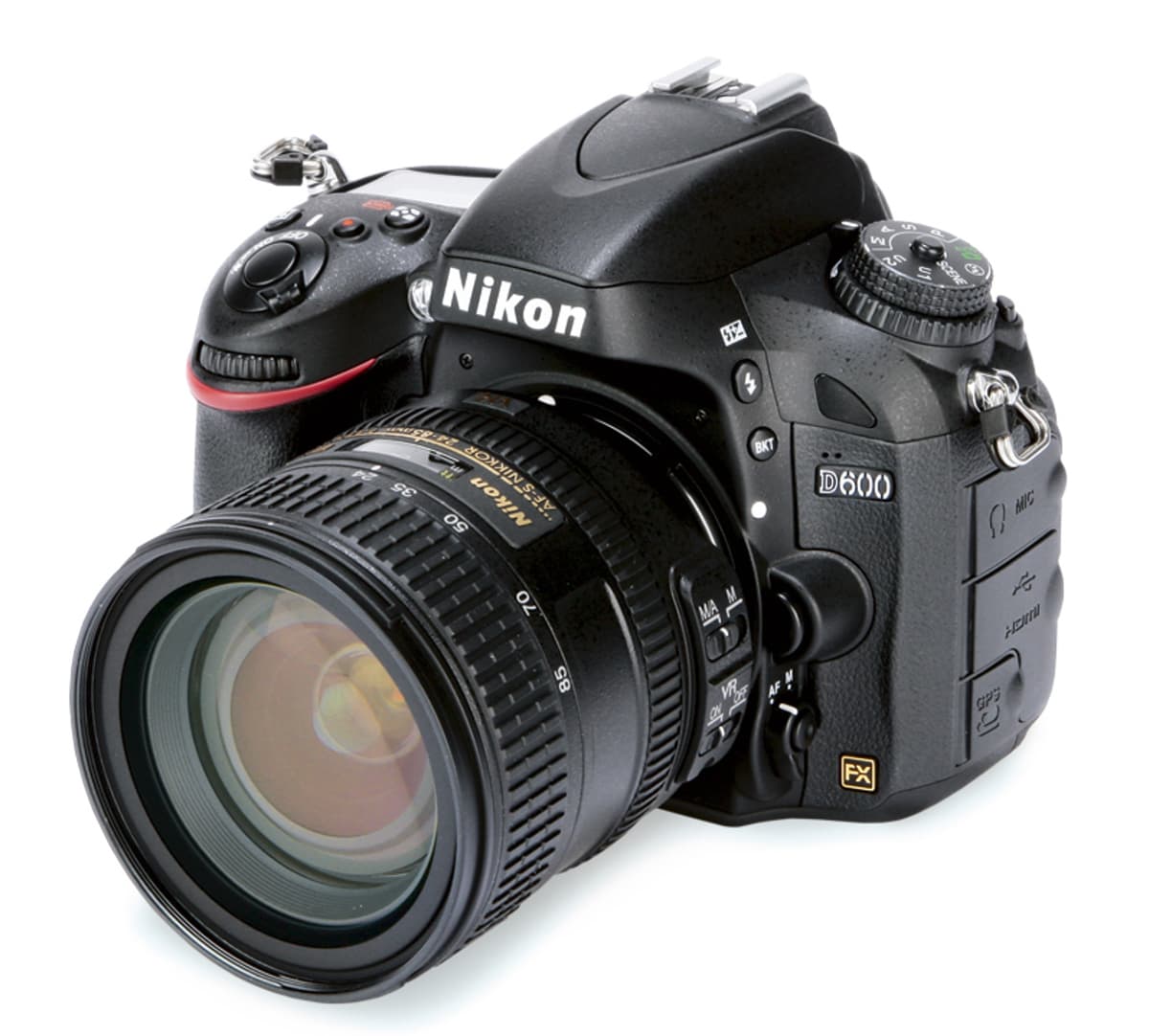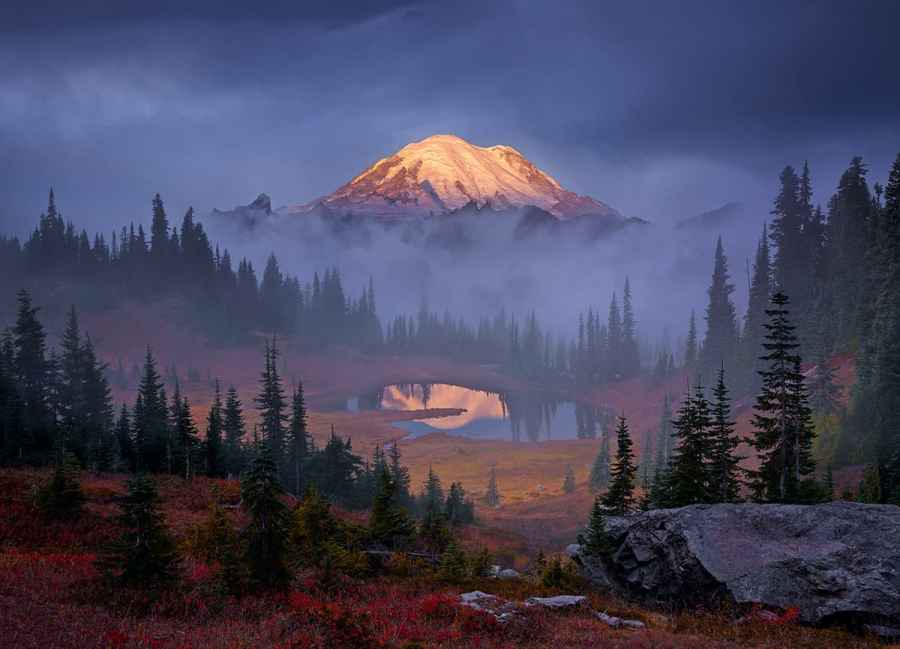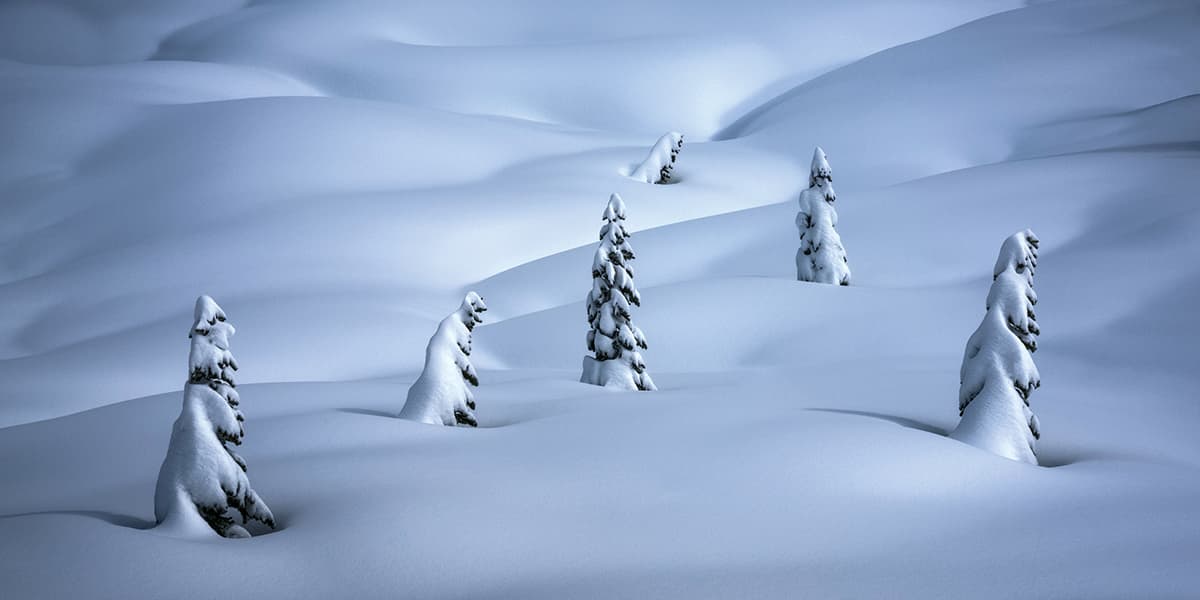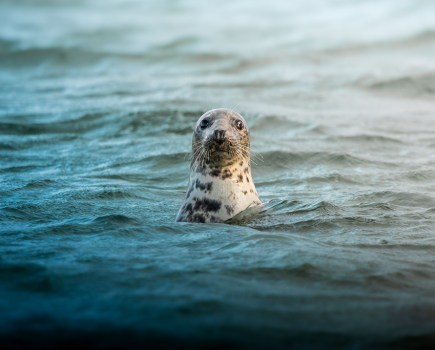
Alex Noriega
I have to say, it feels good to be crowned the 2016 US Landscape Photographer of the Year. Before this, I had only entered one competition, but this year I entered US LPOTY and the 2016 Epson International Pano Awards, and happened to win both.
People often wonder what the real benefit of entering photography competitions is and for me, first and foremost, that benefit takes the form of the cash prizes.
But don’t get me wrong – I’m not a materialistic person. I’m not the kind of guy who’s going to rush out and spend all the winnings on ‘stuff’. I see money as freedom – freedom to go on adventures and create images.
On another level, a contest such as US LPOTY also brings a lot of exposure on social media, so that is an obvious business benefit, and I always like my work being seen by more people.
Winning landscapes
The shot of mine that took the top prize of the 2016 US LPOTY competition shows the sunrise illuminating Mount Rainier as it rises above low clouds, seen from high above Tipsoo Lake, Washington state.
I’m very familiar with Mount Rainier and its different aspects, and I knew that I liked the heavily glaciated east side, and the autumn tundra foliage to be found on the ground. Plus, you’ve got the craggy midground with its propensity to be filled with low clouds.
I didn’t want a straight reflection shot lacking a midground, so I hiked high above the lakes and used a longer focal length (35mm). There was one precise spot I found to stand where the lake would reflect the mountain, and the whole scene was cradled symmetrically by the rows of trees, while showing off the foliage in the foreground.
The fog and light are what made the shot, giving the image a clear hierarchy and sense of depth. I wanted that early light on the highly reflective east-facing glaciers on the mountain, so I knew a sunrise would be superior. Even if something amazing happened at sunset, it would merely be a silhouette of the mountain against the backlit sky.
What makes a successful landscape image tends to vary from photographer to photographer.
On a very basic level, I want to instil some sort of emotion in the viewer. Often that reaction is ‘I want to be there’, but that generally happens with wider scenes with a real sense of place. Maybe it’s just a sense of wonder about the size of the landscape or the realisation of how long it took to form.
Landscapes can show us how small we are, or inspire us to get out and explore our world, rather than sitting in front of glowing rectangles all day. If we’re talking about a tighter abstract-type image, maybe the goal is to confuse the viewer, and keep them guessing at what exactly they’re looking at, while still being visually pleasing and interesting.
Finding your style
Looking back at everything I’ve learned so far, I think perhaps the most valuable lesson I’ve learned is to find my own voice.
The work I care least about (and have purged from my portfolios as I continually curate) is the work where I was attempting to emulate other artists. That’s a good way to learn, but eventually you’ve got to have your own style, and your own purpose and drive to make the images other than ‘someone else shot that and it’s pretty, so I should do it too’.
When I’ve attempted to emulate others, or had tunnel vision for a certain type of image, that’s when I’ve found myself fail. It’s easy and lazy to go and grab an image you’ve seen before, but it’s much more difficult to find something original.
Sure, blend your influences and take bits and pieces from the artists you love, but make your own product out of it. Whenever I’ve failed to be original, after I realise my mistake, it gives me the inspiration to go back and try again to find my own unique interpretation of a place.
Don’t be afraid to experiment. A lot of people new to photography, as with many forms of technology or art, are afraid to try things that might not be ‘correct’. Don’t worry about being proper from the start. Just try a lot of different things as they come to you. You’ll have plenty of time to learn the ‘rules’, to the extent that they even actually exist.
Looking for locations
Research is a pretty key factor when you’re thinking of going out to shoot landscape photographs.
Google Images is a nice resource for tourist snapshots of an area, allowing you to see the possibilities for fine art images. I’ve recently tried to avoid seeing other photographers’ images of an area before visiting, so that I don’t get tunnel vision about what not to copy or about what works at the location.
For what I’ve been working on lately, Google Earth and hiking books have been a good start. Really, you just need to show up somewhere once you decide on a place, and start looking.
When I’m researching a location, the first thing I look for is solitude. I’m done shooting the same thing as others and jockeying tripod legs, unless it’s my friends or clients along with me. I do my best work when I’m alone and I can really explore and concentrate without getting in anyone’s way, or vice versa.
Next, I’m looking for possibilities for composition – just interesting attributes of the landscape to work with (see the Mount Rainier image). If you look at a place like an overlook at the Grand Canyon, sure, that’s an amazing view.
But there aren’t tons of possibilities, as you aren’t able to change your perspective much, and the scene is so dependent on conditions. I like places that have something to work with in any type of light; both small and large scenes.
In terms of light, I’m not that big a fan of spring and summer. I’m much more drawn to autumn and winter scenes. Snow can be so amazing, as is autumn foliage, and especially if you get the two combined.
For light, you won’t find many blazing sunsets or sunrises in my portfolio. I love golden, dappled storm light with a dark sky as a backdrop. Fog is always a favourite, too, as it gives many scenes depth.
Alex’s kit choice
The lens that I’ve been using a lot of recently is the AF-S Nikkor 70-200mm f/4G ED VR on a Nikon D600 camera. I seem to be using that a lot more than my wider lenses. I find it more difficult to come up with something that doesn’t feel formulaic with the wideangles. I’ve been excluding skies altogether in a lot of my recent photography.

Nikon D600
Accessories wise, I’m a photographer who tends to travel light. I don’t really use filters or accessories. I usually just have the camera, lens and a Really Right Stuff TQC-14 tripod. I couldn’t do without an L-plate on the camera, but that’s part of the main tripod support system and not a mere accessory. I also use a shutter release/remote, but using a two- or five-second timer is just as effective in most cases.














